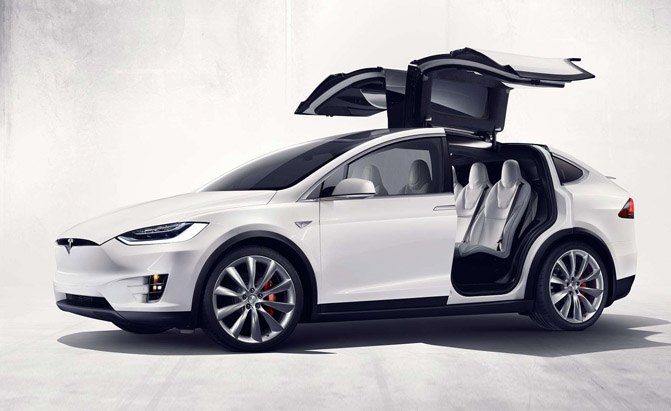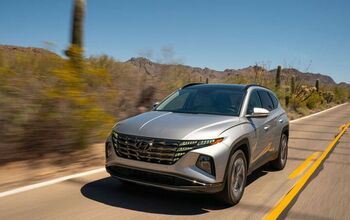Glossary of Electrified Vehicle Terms - Part One
For the past several years the public and media have had their hands full grappling with overlapping terms for electrified vehicles – and just when we were all getting comfortable with a century old lexicon focused on fuel from “fossils” and the power of the “horse.”
Fossil fuels and horsepower don’t appear to be on the endangered species list quite yet, but a new class of vehicles using batteries in one form or fashion has led to a plethora of new verbiage, at times misleading, even from the top.
Take for example President Barack Obama’s goal of “One Million Electric Vehicles By 2015” widely repeated in headlines. Actually, the president did not quite mean “electric vehicles” as that term is understood and even as his own fine print explained. That didn’t stop him from using it however, so, not only was the goal optimistic, it was misstated from the beginning.
What Obama really meant by “electric vehicles” was not one million pure battery electric cars like the Tesla Model S or Nissan Leaf, but all plug-in electrified vehicles – as explained by his staff after he let his famous words fly.
“Electric vehicles (“EVs”) – a term that includes plug-in hybrids, extended-range electric vehicles and all- electric vehicles,” said the 2011 recap of his stated goal after he’d gone and muddied the waters for uninitiated journalists everywhere.
Why does this matter? One reason is studies have repeatedly shown the average consumer doesn’t quite “get it” with electrified vehicles – how they work, what they are, which ones they are, how they would benefit them, whether they are of value, and so on. Among much more that needs to happen in the campaign to “educate” people, it would at least help if we could agree to call them what they are if one hopes for increased understanding.
But to be fair, this discussion over definitions really is part of a shakeout. When even the president takes license to make up terminology that disagrees with that of others, it’s clear we have no universal standard, like Webster’s Dictionary does for English.
And, by now most people following these vehicles have come to understand and agree upon terms, so it’s usually no worries, but not always. To help remedy that, we’re compiling a glossary of terms for electrified and all alternative energy transportation.
This first installment will hit the high spots of electrified vehicles – starting with that term itself – and we’ll have more later. Following, we’ll account for the disagreement out there, allow for alternatives, and will hopefully shed some light on subjects at hand.
(Partial) Glossary of Electrified Vehicle Terms
Electrified Vehicle – This catchall term is a beauty and we’ve often heard it repeated by Ford, as well as others. Basically anything with electric propulsion could fit the definition, but most commonly it speaks of plug-in hybrids, all-electric vehicles, and even conventional non-plug-in hybrids (see definitions for these below).
Plug-in Electrified Vehicle (PEV) – What Obama should have said instead of “electric” in his speech. These are electrified vehicles that plug-in to the grid; namely plug-in hybrid and pure electric vehicles (see definitions and synonyms below).
Electric Vehicle (EV) – In the broadest sense, a vehicle powered solely by electricity. Can include any number of wheels, shape or size – so bicycles, motorcycles, scooters, carts and even 18 wheelers could be included, as long as they are only electric powered. If GM decides next decade to build a Silverado dually pickup with all-electric drive and lithium-air battery (which is not available yet), it would be an “EV.”
Most commonly today in the automotive world, it denotes a four-wheel vehicle such as a Tesla Model S, Nissan Leaf, or the like.
By extension a fuel cell vehicle (FCV) crosses into the definition and alternately it bridges into the category of a “hybrid” as well. Typically FCVs are understood to be in a different category of their own.
Battery Electric Vehicle (BEV) – Also called “pure electric” vehicle. A form of electric vehicle that uses a battery and traction motor and no internal combustion. It would exclude FCVs but otherwise the abbreviation BEV and EV are essentially interchangeable and in the mind of most EVs and BEVs are often seen as synonymous.
There has been a move to replace BEV with “all-electric vehicle” but mentioning the battery does distinguish it from FCVs.
Hybrid Electric Vehicle (HEV) – Also known simply as a “hybrid” or hybrid vehicle or hybrid car. A vehicle driven by at least two sources of propulsion. Typically it’s only two sources – not three or more, and these are almost universally internal combustion and battery electric. Technically however, any number of combinations is possible. For example if someone wanted to pair a compressed air motor and diesel engine, it would fit the definition, though we have not heard of such a machine. In the U.S. there are no diesel-electric hybrids, but in Europe, there are a few.
A fuel cell vehicle has also at times been lumped into the hybrid category, particularly by Toyota in explaining its Mirai. As mentioned, an FCV is also seen as all-electric, but it merges a fuel cell stack with a small battery electric drive like a Prius would have. In actuality, it’s a hybrid between two electric sources. (Is a type of vehicle that fits in three classes or any of each confusing enough for you? Sorry, we did not make this up.)
Full Hybrid – A form of hybrid that allows all-electric drive, or merged gas-plus-electric operation. Examples would include any of Toyota’s hybrids or those by Ford. Also called a “strong hybrid.”
Mild Hybrid – A form of hybrid that uses both sources together. An example would be a Chevy Malibu eAssist or Honda Civic hybrid which never allow the gas engine to fully shut off and decouple for pure electric drive. The motor and electrified portion of the system is not typically strong enough for pure EV drive, so it’s more a “helper” motor. Even if in cases it is strong enough, the system architecture does not decouple the mated internal combustion engine and electric motor.
Micro Hybrid – Some consider this a contrived term as it’s the least form of hybrid there is, or not a “hybrid” at all. Vehicles that use an extra large battery to take some of the parasitic load off of the gas engine qualify. These vehicles don’t actually have electric drive, thus do not merge two propulsion sources and therefore they aren’t really a “hybrid” by the stricter definition.
An example could be the Mazda i-eloop system which employs a battery charged during operation and that can run subsystems. Automakers are showing interest – often with a 48-volt battery system augmenting a 12-volt system and conventional engine. This technological approach is low-hanging fruit to typically gain improved fuel economy reportedly as high in cases as 10-20 percent – not insubstantial to carmakers. And, the systems are relatively cheap to build, and help automakers make the grade without full commitment to more effective electrified systems.
Plug-in Hybrid Electric Vehicle (PHEV) – This is a hybrid electric vehicle (HEV) with a larger battery and connection to the grid (or renewably sourced electricity). It stores more electric energy so as to be able to run on pure electricity for longer runs.
Examples would be the Ford Fusion Energi, Toyota Prius Plug-in Hybrid Electric Vehicle, even the Chevy Volt and Cadillac ELR, though these latter are also EREVs (extended-range electric vehicles).
Extended-Range Electric Vehicle (EREV) – A unique system architecture, and form of plug-in hybrid acknowledged as distinct from conventional PHEVs. Ex. Chevy Volt.
A paper submitted by GM to the SAE phrases it this way: “A vehicle that functions as full-performance battery electric vehicle when energy is available from an onboard RESS [rechargeable energy storage system] and having an auxiliary energy supply that is only engaged when the RESS energy is not available.” Of a “PHEV” it says: “A hybrid vehicle with the ability to store and use off-board electrical energy in the RESS.”
The first-generation Volt was capable of series hybrid operation, and the second generation is not. It remains an EREV by how it operates – it runs purely on electricity as long as the battery is charged. A gas engine extends range once the battery power is depleted. Unique is the gas engine can not normally be induced to kick on as long as there is battery charge, something that cannot be said by conventional PHEVS.
Fuel Cell Vehicle (FCV) – A type of electric vehicle utilizing a fuel cell stack which operates as a form of a battery. The vehicle chemically converts hydrogen to electrical energy used in its propulsion and operation. These vehicles may also employ a small battery and system architecture from a conventional hybrid. This is the case with Toyota’s Mirai which uses hardware from the Camry hybrid and Prius with its advanced fuel cell hardware. It uses no internal combustion. Also known as Fuel Cell Electric Vehicle (FCEV).
Series Hybrid – A system in which a vehicle is propelled solely by the electric motor. The internal combustion engine provides energy and recharges the battery, but in series mode, the engine does not mechanically drive the wheels.
The Fisker Karma was the only production series hybrid. The VMW i3 REx operates in series mode with its gas range extender. The first generation Volt could operate much of the time in series mode. Via Motors’ converted GM trucks are also series hybrids.
Parallel Hybrid – When a vehicle is propelled by both the engine and/or electric motor(s). Example: Honda Civic Hybrid. Other hybrids like the Prius may operate in parallel model or series or pure EV.
Traction Motor – An electric motor that drives the vehicle. There may be more than one motor in a hybrid system or EV, but this one propels the vehicle. Also called propulsion motor.
Stop/Start Technology – In simplest terms, a stop-start system automatically shuts the engine off every time the vehicle stops, such as at a traffic signal, and restarts it instantly when it’s time to go.Depending on the system design and driving environment, stop-start by itself can add 3-10 percent to mpg numbers.
Regenerative Braking – Used in most electrified vehicles. In simplest terms, it is a means to captures brake energy by using the traction motor as a generator to convert to electric energy and recharge the battery.
Charging Station – Also called charging point or EVSE (Electric Vehicle Supply Equipment). Technically a misnomer as EVs and PHEVs have their chargers on board – except in the case of DC-DC charging, where it is effectively “charging.” The EVSE or charging station supplying AC current is otherwise not the “charger,” and actually serves as a switch to direct current of varying amperage and volts to the on-board charger via a plug port.
Level 1 charging – Involves powering the EVSE via a typical wall socket. In the U.S. this is typically a 120-volt (nominal) outlet. In European countries where there may be higher current at the wall, charge speeds can be quicker.
Level 2 charging – Charging from a 240-volt outlet, and typically with higher amperage too. Amperage current makes a huge differnce in charge rates. Smaller EVs like the Leaf might take 30 amps or so. Tesla’s high-power wall charger delvers a nominal 80 amps at 240 volts – much more recharging power – thus not all “level 2” charging is equal.
In any case this works much faster than level 1. It’s practically required for EVs with larger batteries than PHEVs. It is optional for PHEVs which may replenish fast enough overnight on wall power.
Level 3 charging – Also known as DC fast charging or DC quick charging and not available for homeowners. This is high amperage, high voltage – typically 480 volts – that can charge a battery pack 80 percent full in about 30 minutes more or less. The SAE does however allow for a type of AC level three, but it’s not commonly seen in use.
A special port on the electric vehicle is used to send the power to the battery. It bypasses the AC-DC converter used in level 1 and 2. All batteries are DC power, and this is the fastest type of current dump available.
All-Electric Range (AER) – The distance an EV or PHEV can travel on electricity alone.
Range Anxiety – What you feel when AER is not enough for your comfort level.
Fun to drive – what you feel when an electrified car is charged and operating in EV mode. Also known as Rolls Royce quiet; a novel experience, addictive.
(Warning, all electric driving may make you never want to go back to internal combustion. It’s been known to happen.)
Become an AutoGuide insider. Get the latest from the automotive world first by subscribing to our newsletter here.
More by Jeff Cobb



































Comments
Join the conversation